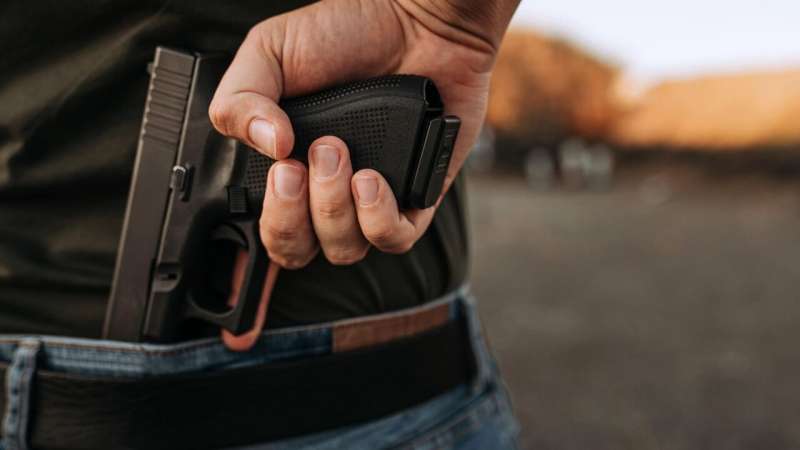
The rate of firearm homicides in the United States decreased in 2022, the first drop seen since a sharp increase emerged early in the pandemic, public health officials reported.
In 2022, firearm homicides numbered 5.9 deaths per 100,000 people nationwide, researchers from the U.S. Centers for Disease Control and Prevention found. They had numbered 4.4 deaths per 100,000 in 2019, before climbing to 5.8 per 100,000 in 2020 and 6.3 per 100,000 in 2021.
The 2020 jump was the highest increase seen relative to the previous 20 years, according to the report published Oct. 20 in the CDC publication Morbidity and Mortality Weekly Report.
A “range of factors” have contributed to higher rates of firearm-related deaths, according to the researchers. These include economics and social and health care-related inequities worsened by the pandemic.
The report noted ways to fix that.
“These efforts include policies and programs promoting economic and housing security, hospital and community-based outreach and violence interruption programs, initiatives to enhance secure firearm storage to prevent unauthorized access or use,” the report stated.
The report also showed that racial disparities were similar to previous years.
Black people continued to have the highest firearm homicide rates. The rate of firearm deaths for Black people was 27.5 per 100,000 in 2022, 30.4 in 2021, 28.3 in 2020 and 20.5 per 100,000 in 2019.
The only ethnic group that saw an increase in the rate of deaths in 2022 was American Indian/Alaska Native people. For that group, deaths were 9.3 per 100,000 in 2022, compared to 7.7 in 2021 and 7.9 in 2020.
Hispanic people had a level rate in 2022, but it was still higher than in 2019. For white people and Asian or Pacific Islanders, rates increased from 2019 to 2021, then decreased in 2022.
President Joe Biden signed federal legislation last year to address gun violence, the most significant move since the 1994 assault weapons ban expired, CNN reported.
That package, known as the Bipartisan Safer Communities Act, includes $750 million to help states run crisis intervention programs, which can temporarily prevent individuals in crisis from accessing firearms by court order. It can also be used for mental health, drug and veterans courts, CNN reported.
Following the CDC report’s release, White House Press Secretary Karine Jean-Pierre called on Congress to pass additional gun violence prevention measures, noting how communities of color were disproportionately impacted.
“This report makes clear that communities of color are especially at risk of facing this senseless violence. Black Americans continue to be disproportionately killed by gun homicides, with a rate more than four times higher than that of the general population,” Jean-Pierre said in a statement.
More information:
The Pew Research Center has more on Americans and guns.
Scott R. Kegler et al, Notes from the Field: Firearm Homicide Rates, by Race and Ethnicity—United States, 2019–2022, MMWR. Morbidity and Mortality Weekly Report (2023). DOI: 10.15585/mmwr.mm7242a4
Journal information:
Morbidity and Mortality Weekly Report
Source: Read Full Article
